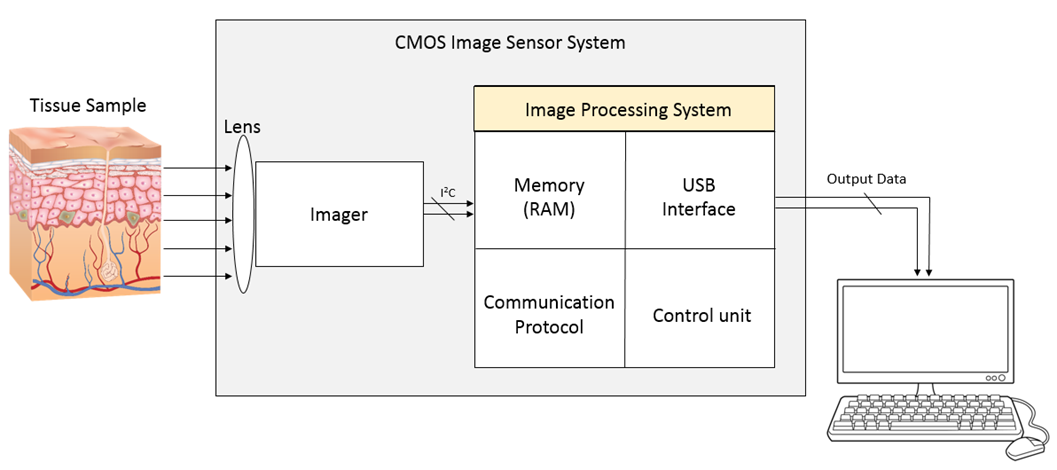
There is a need in both the biology and aerospace communities to gather data about how radiation affects various cell tissues. A CMOS imager system is ideal for measuring radiation flux in cellular tissue because an image sensor array can detect minute electromagnetic changes.
This design incorporates one circuit board for the image sensor and one for the memory unit and control circuitry. An imager was selected with high enough definition to measure effects on a cellular level. The logic to capture and store the images was designed using the Altera Hardware Description Language (AHDL) design tool and implemented in hardware with an Altera Flex-10K FPGA.
The two boards are connected using a flex harness in order to protect the control board from harmful radiation effects. This improved device will show which cells in a sample absorb radiation or allow it to pass through, enabling NASA researchers to study radiation effects at the cellular level.
This project is motivated by two leading factors:
